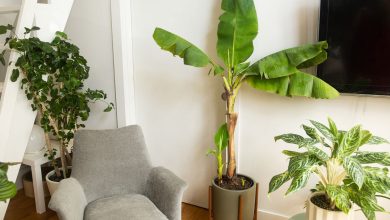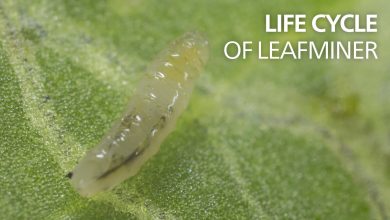10 Perfect Anti-Humidity Plants for Your House
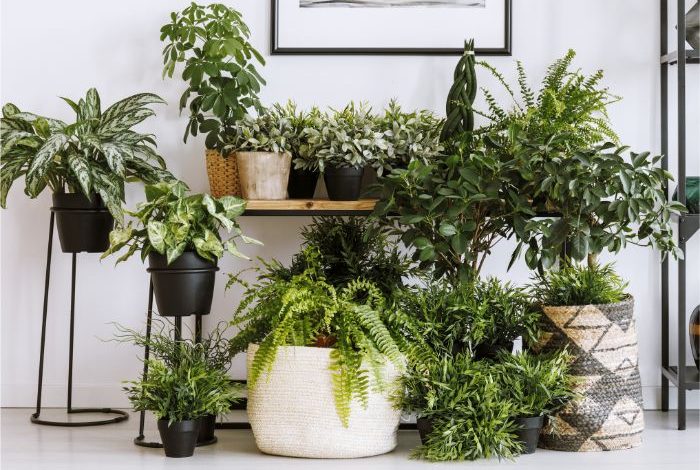
Do you live in a house with high humidity?
If you spend your life thinking about strategies to combat humidity in your home, you’re in luck because today we present you plants that will help you in this task.
All of them, in addition to giving the touch of naturalness and decoration that your home deserves, also have anti-humidity properties.
That means that you no longer have to fight or put up with annoying odors, respiratory problems and other negative factors associated with it.
Are you interested in knowing what they are and locating them to put them in the place you already have in mind?
Well let’s see them
Calathea
- Scientific name: Calathea Makoyana.
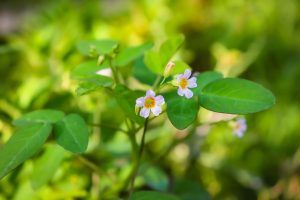
- Common name: Calathea, Calathea.
- Height: about 1 meter.
- Light need: medium, not direct sun because the leaves burn.
- Temperature: adaptable to any climate, it resists cold well.
- Irrigation: 2 to 3 times in the hot period and once a week in the cold.
- Fertilizer: while it is in the growth phase every 15 days.
It is a plant native to tropical environments where high humidity prevails in its natural habitat, so it responds very well to spaces with these characteristics.
As the structure of the calathea is with leaves of different colors, it gives added value at a decorative level, which is why it is usually one of the favorites for these purposes.
Its light needs are minimal, so there will be no problem having it in certain rooms of the home.
spider plant
- Scientific name: Chlorophytum comosum.
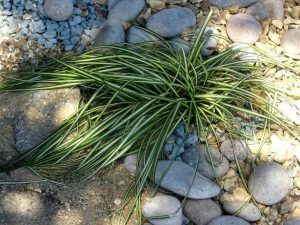
- Common name: spider plant, malamadre, bow, ribbon, bow of love, daddy heart, spider.
- Height: around 40 centimeters, depending on the length of its leaves.
- Light requirement: medium to high.
- Temperature: warm climates and supports cold up to -2° C.
- Irrigation: regular in summer and spray leaves if the environment is very dry.
- Subscription: work fortnightly during the spring and summer period.
This plant, which is so special and unique because of the shape of its leaves, has the ability to collect the moisture it needs from the environment where it is.
Therefore, the benefit is mutual, since you will have your spaces with less humidity and she will feel cared for by having more water for her own consumption.
Of course, it needs some light, so it will be necessary to choose the place where it is located well so that it is not too dark.
Melaleuca
- Scientific name: Melaleuca alternifolia.
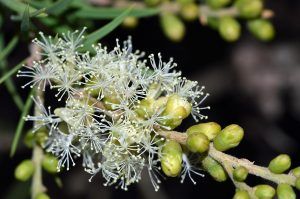
- Common name: melaleuca, narrow-leaved tea tree.
- Height: 25 meters when not kept tight with pruning.
- Light requirement: high.
- Temperature: warm, with resistance to cold down to -5° C.
- Irrigation: regular, more in summer and less in winter.
- Subscription: it is not required, but contributions can be made in its growth phase.
In this case it is not a plant for the interior of the house but to locate outdoors, since it is a tree.
It is frequently used to locate it in areas of substrates that are usually flooded or have a high level of humidity, making it difficult for other species to develop.
Thanks to the action of melaleuca, it is possible to make better use of the substrate without the risk of drowning in the roots of other plants.
bamboo palm tree
- Scientific name: Chamaedorea seifrizii.
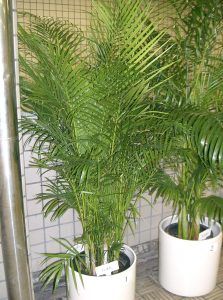
- Common name: bamboo palm, bamboo palm, seifriz bamboo palm.
- Height: about 3 meters.
- Light Need: Low to medium, no direct sunlight.
- Temperature: up to a maximum of -2° C.
- Irrigation: abundant and regular so that the substrate does not dry out.
- Fertilizer: with organic matter on a regular basis.
When choosing a plant that is very useful for absorbing moisture and that is also responsible for purifying the air , the bamboo palm tree is the preferred option.
Already when saying that it is a palm tree, it is evident that it is an elegant and beautiful option to have in a pot inside the house.
Of course, it is a warm climate so to keep it healthy it is essential to work in a place where frost does not reach it.
- This guide to learn more about the planting and care of palm trees.
- How to plant a palm tree.
- Why should you fertilize a palm tree?
peace lily
- Scientific name: Spathiphyllum.
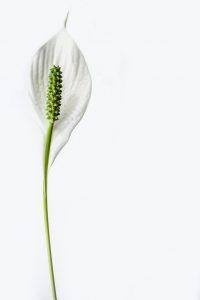
- Common name: peace lily, peace lily.
- Height: less than 1 meter tall.
- Light requirement: medium to low.
- Temperature: warm without frost, preferably.
- Irrigation: not very frequent, a maximum of 2 times a week in summer.
- Fertilizer: liquid fertilizer twice a month in spring and summer.
This plant is beautiful, with bright green leaves and generates a white flower that complements the environment it gives.
It is easy to absorb moisture through its leaves, helping to balance the conditions in the space where it is placed.
In fact, its leaves could turn brown due to low environmental humidity, so in these cases it should be supported with more watering and spraying.
Mint
- Scientific name: Mentha.
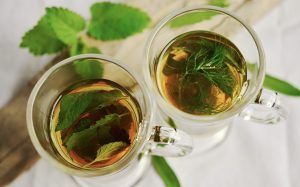
- Common name: peppermint.
- Height: less than 1 meter.
- Light Need: Medium to high, no direct sun.
- Temperature: 13 to 21°C.
- Irrigation: regular, but not abundant. You should only have a slightly moist substrate.
- Fertilizer: in times of vegetative growth, apply fortnightly.
Mint is a very noble plant in terms of its benefits, since in addition to being medicinal and ideal for the kitchen, it is also an option for controlling environmental humidity.
It is a plant that requires water to be healthy, so humid environments are good for it.
Its small green leaves give the natural and beautiful touch that is sought inside the house and as it provides its characteristic aroma, it could be said that it is a wonderful option in the category of anti-humidity plants.
Tillandsias
- Scientific name: Tillandsia spp.
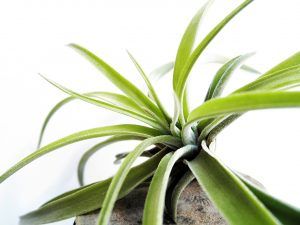
- Common name: tilansia, flower of the air, carnation of the air.
- Height: between 1 and 2 meters.
- Light requirement: medium to high.
- Temperature: warm, the best is between 10 and 30° C.
- Irrigation: infrequent. They are quite resistant.
- Fertilizer: special for aerial plants. Dilute in water and apply with irrigation.
It is one of the most effective plants when it comes to absorbing environmental humidity because, in fact, it does not have roots through which to take in the water necessary to live.
It is very easy to care for and brings a different look to the place where it is placed because it does not need a substrate in which to live.
With its purple inflorescence it also provides a high level of decoration to the space in which it is located.
english ivy
- Scientific name: Hedera helix.
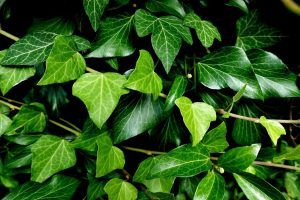
- Common name: English ivy, common ivy.
- Height: as it is a climber, the height will depend on the planting conditions.
- Light requirement: medium, should receive indirect sunlight.
- Temperature: warm, between 10° and 24° C preferably.
- Irrigation: regular, waiting until the substrate dries to continue.
- Fertilizer: liquid fertilizer for green plants in spring and summer.
For those who are lovers of climbing plants, English ivy will be the ideal option as an anti-humidity plant because it grows precisely that way.
The plant can be kept attached to some structure or also in a hanging pot, allowing it to release its stems and give it the desired shape.
As it helps control humidity, it is also easy to prevent mold from appearing in areas where it accumulates frequently, such as the bathroom.
boston fern
- Scientific name: Nephrolepis exaltata.
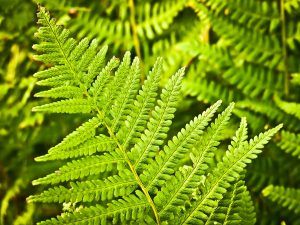
- Common Name: Boston Fern, Curly Fern, Sword Fern, Nephrolepis.
- Height: less than 1 meter.
- Light Need: Medium to high without direct sunlight.
- Temperature: 18 to 21° C preferably. In winter it tolerates up to 3° C.
- Irrigation: by immersion of the pot, without getting the bud wet.
- Fertilizer: liquid fertilizer in times of growth.
The Boston fern is a plant that grows naturally in high humidity environments, such as near swamps.
In fact, when it is in dry environments, it is necessary to accompany the recommended irrigations with spraying of the leaves so that it remains in excellent health.
It can be kept in a hanging pot, which allows greater freedom when placing it in the interior spaces of the house.
begonias
- Scientific name: Begonia Elatior <span style=”font-weight: 400;”>.
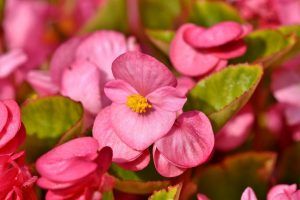
- Common name: begonia, flower begonia.
- Height: Less than 1 meter.
- Light requirement: medium, without direct sun because it burns its leaves.
- Temperature: warm and constant, without drafts.
- Irrigation: always moist substrate. Irrigation with a plate under the pot.
- Fertilizer: liquid during spring and summer.
A spectacular plant that produces beautiful blooms in vivid colors and also helps control humidity? You are interested in meeting the begonia.
This plant loves humid spaces and grows very well indoors, so having it in an area like the bathroom will be appreciated.
It can flower throughout the year, since it does not adjust to the length of the days but to the number of leaves it develops to feel ready.
- To know more: The cultivation of the Begonia.
- How to take care of my begonias.
- How to water my begonias.
- How to plant a begonia from cuttings.
There are places in the house that are known to have high humidity, such as the bathroom and the kitchen, where it is essential to control it.
In these cases, the use of anti-humidity plants will help you get rid of that headache and your spaces look and smell good.
In addition, with these plants you will be adding a fresh and unique touch to the environment, so which one do you choose?

![Photo of How to Plant Thyme in 12 Steps [Guide + Images]](https://www.complete-gardening.com/wp-content/uploads/2022/08/how-to-plant-thyme-in-12-steps-guide-images-390x220.jpg)
![Photo of Cultivating Passion Fruit in Spain: [Cultivation, Care, Pests and Diseases]](https://www.complete-gardening.com/wp-content/uploads/2022/08/cultivating-passion-fruit-in-spain-cultivation-care-pests-and-diseases-390x220.jpg)
